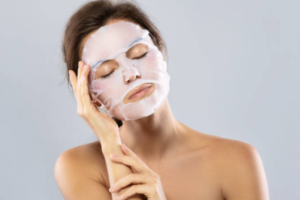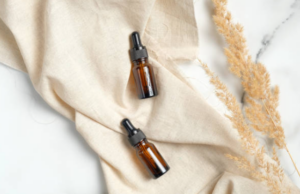Beyond Black and White

In the realm of beauty, the debate between natural and synthetic ingredients has long been a contentious topic. With consumers increasingly concerned about the safety and efficacy of the products they use, the distinction between natural and synthetic has become a defining factor in purchasing decisions. However, this perceived divide oversimplifies a complex issue and fails to capture the nuances of ingredient sourcing, formulation, and impact on both our bodies and the environment. In this in-depth exploration, we will delve into the natural vs. synthetic dichotomy in beauty products, unpacking myths, shedding light on truths, and ultimately questioning the binary narrative that often dominates the conversation.
The natural beauty movement emerged as a response to growing concerns about the use of synthetic chemicals in cosmetics. Advocates of natural beauty emphasize the use of plant-based ingredients, botanical extracts, and essential oils, citing their perceived safety and efficacy. Proponents argue that natural ingredients are inherently superior to their synthetic counterparts, offering a purer and more wholesome approach to skincare and makeup.
Natural ingredients have undeniable appeal, evoking images of lush botanical gardens and ancient herbal remedies. Many consumers are drawn to the idea of harnessing the power of nature to nourish and rejuvenate their skin, believing that natural products are gentler, safer, and more sustainable than synthetic alternatives. Additionally, the rise of wellness culture has fueled interest in holistic approaches to beauty, further driving demand for natural skincare and makeup products.
The Reality of Synthetic Ingredients
Synthetic ingredients play a vital role in modern cosmetics, offering a wide range of benefits that contribute to product performance, stability, and safety. Contrary to common misconceptions, synthetic ingredients are not inherently harmful or inferior to natural alternatives. Here’s a closer look at the reality of synthetic ingredients:
1. Stability and Consistency
One of the primary advantages of synthetic ingredients is their stability and consistency. Unlike natural ingredients, which can vary in quality and potency depending on factors such as climate and harvest conditions, synthetic ingredients are produced under controlled laboratory conditions. This consistency ensures that cosmetic formulations maintain their efficacy and performance over time, without the need for preservatives or stabilizers.
For example, synthetic antioxidants such as tocopherol (vitamin E) or ascorbic acid (vitamin C) are commonly used in skincare products to prevent oxidative damage and extend the shelf life of formulations. These synthetic antioxidants offer superior stability compared to their natural counterparts, making them valuable ingredients for protecting the skin against environmental stressors and premature aging.
2. Safety and Regulation
Synthetic ingredients undergo rigorous testing and regulation to ensure their safety for use in cosmetics. Regulatory agencies such as the U.S. Food and Drug Administration (FDA) and the European Union’s Cosmetics Regulation require cosmetic manufacturers to conduct comprehensive safety assessments and provide scientific data to support the safety of cosmetic ingredients, including synthetic substances.
Before a synthetic ingredient can be used in a cosmetic product, it must undergo thorough testing to evaluate its potential toxicity, irritancy, sensitization, and other safety parameters. This testing includes in vitro studies, animal testing (where required by law), and human clinical trials to assess the safety and efficacy of the ingredient. Only after demonstrating safety and regulatory compliance can a synthetic ingredient be approved for use in cosmetics.
3. Performance and Innovation
Synthetic ingredients offer unparalleled opportunities for innovation and product performance in the cosmetics industry. Advances in green chemistry and biotechnology have led to the development of novel synthetic ingredients that offer targeted skincare benefits, such as enhanced hydration, wrinkle reduction, and skin brightening.
For example, peptides, which are synthetic compounds made up of amino acids, are widely used in skincare formulations for their anti-aging properties. Peptides can stimulate collagen production, improve skin elasticity, and reduce the appearance of fine lines and wrinkles, leading to smoother, more youthful-looking skin. Additionally, synthetic polymers are used in hair care products to provide long-lasting hold, volume, and frizz control without weighing down the hair or leaving residue.
4. Environmental Considerations
While the environmental impact of synthetic ingredients is often a point of contention, it’s essential to consider the broader context of ingredient sourcing, manufacturing, and disposal. While some synthetic ingredients may have environmental drawbacks, such as petrochemical-derived ingredients that contribute to carbon emissions, others offer potential sustainability benefits.
For example, biodegradable polymers, such as polyhydroxyalkanoates (PHAs) or polylactic acid (PLA), are synthetic materials derived from renewable resources like plant sugars or starches. These biodegradable polymers offer alternatives to traditional plastics and can be used in eco-friendly packaging or biodegradable exfoliants without contributing to plastic pollution or environmental harm.

Debunking Myths
Myth #1: Natural is Always Better
While natural ingredients can offer unique benefits, not all natural substances are safe or effective for use in cosmetics. It’s essential to recognize that natural does not necessarily equate to safe or superior. Some natural ingredients may cause irritation, allergic reactions, or sensitivities in certain individuals. For example, essential oils, which are commonly used in natural skincare products for their aromatic and therapeutic properties, can be irritating to the skin if used in high concentrations or by individuals with sensitive skin.
Moreover, the efficacy of natural ingredients can vary depending on factors such as sourcing, processing, and formulation. For instance, botanical extracts may lose potency during extraction and processing, leading to diminished skincare benefits. Additionally, natural ingredients may not always be sustainable or environmentally friendly. The cultivation and extraction of certain natural ingredients, such as palm oil or exotic plant extracts, can contribute to deforestation, habitat loss, and biodiversity depletion.
Myth #2: Synthetic Ingredients are Unsafe
Contrary to popular belief, synthetic ingredients have undergone extensive testing and regulation to ensure their safety for use in cosmetics. Many synthetic ingredients are derived from natural sources or designed to mimic naturally occurring compounds, offering consistent performance and stability. For example, hyaluronic acid, a popular skincare ingredient prized for its hydrating properties, can be synthesized in a lab using fermentation processes, resulting in a pure and standardized product that is free from impurities.
It’s essential to recognize that safety concerns related to synthetic ingredients often stem from misinformation or fearmongering rather than scientific evidence. Regulatory agencies such as the U.S. Food and Drug Administration (FDA) and the European Union’s Cosmetics Regulation have established safety standards and guidelines for cosmetic ingredients, including synthetic substances. Additionally, advancements in green chemistry have led to the development of safer and more sustainable synthetic alternatives that offer comparable benefits to their natural counterparts.
Myth #3: Natural is Environmentally Friendly
While natural ingredients are often perceived as more environmentally friendly, their cultivation and extraction can have significant ecological consequences. For example, the production of ingredients like palm oil, which is commonly used in cosmetics and personal care products, has been linked to deforestation, habitat destruction, and biodiversity loss in regions such as Southeast Asia and Africa. Similarly, the demand for exotic botanical extracts can contribute to overharvesting and the depletion of wild plant populations.
On the other hand, synthetic ingredients can be produced with less land, water, and energy compared to their natural counterparts. For example, biotechnology and fermentation processes can be used to produce skincare ingredients like hyaluronic acid or squalane in a controlled environment, reducing the environmental footprint associated with traditional agriculture or extraction methods. Additionally, synthetic ingredients can offer opportunities for upcycling and waste reduction by repurposing byproducts or industrial byproducts into valuable raw materials.

The Rise of Clean Beauty
In recent years, the clean beauty movement has gained momentum as consumers become more conscious of the ingredients in their skincare and makeup products. Clean beauty represents a middle ground between natural and synthetic beauty philosophies, emphasizing transparency, safety, and sustainability. Here’s a closer look at how clean beauty is bridging the divide between natural and synthetic ingredients:
1. Ingredient Integrity
At the heart of clean beauty is a commitment to ingredient integrity. Clean beauty brands prioritize the use of safe, non-toxic, and ethically sourced ingredients, regardless of whether they are natural or synthetic. This means avoiding potentially harmful chemicals such as parabens, phthalates, sulfates, and synthetic fragrances, and opting for clean alternatives that are gentle on the skin and the environment.
Clean beauty formulations are often free from unnecessary fillers, preservatives, and artificial additives, focusing instead on high-quality, active ingredients that deliver tangible skincare benefits. By prioritizing ingredient integrity, clean beauty brands aim to provide consumers with effective, trustworthy products that align with their health and environmental values.
2. Transparency and Accountability
Transparency is a cornerstone of the clean beauty movement. Clean beauty brands are committed to providing consumers with clear and accurate information about their products, including full ingredient lists, sourcing practices, and manufacturing processes. By fostering transparency and accountability, clean beauty brands empower consumers to make informed choices about the products they use and support.
Many clean beauty brands undergo third-party certifications and audits to verify their claims and demonstrate their commitment to safety and sustainability. Certifications such as the Environmental Working Group’s (EWG) EWG Verified™ or the Leaping Bunny cruelty-free certification provide consumers with reassurance that a product meets rigorous standards for ingredient safety, environmental impact, and animal welfare.
3. Environmental Consciousness
Sustainability is a core value of the clean beauty movement. Clean beauty brands prioritize eco-friendly packaging, renewable resources, and responsible sourcing practices to minimize their environmental footprint. This includes using recyclable or biodegradable packaging materials, reducing waste and carbon emissions, and supporting ethical supply chains and fair trade practices.
Additionally, some clean beauty brands go beyond minimizing harm and actively work to make positive contributions to environmental conservation and community development. For example, brands may partner with environmental organizations, participate in reforestation efforts, or invest in sustainable farming initiatives to support biodiversity, habitat restoration, and community empowerment.
4. Accessibility and Inclusivity
Clean beauty is committed to accessibility and inclusivity, ensuring that everyone has access to safe, effective, and affordable beauty products. Clean beauty brands strive to cater to diverse skin types, tones, and concerns, offering a range of formulations and shades that meet the needs of a broad spectrum of consumers.
Inclusivity extends beyond product offerings to encompass representation, marketing, and advocacy. Clean beauty brands prioritize diversity and authenticity in their marketing campaigns, featuring real people with diverse backgrounds, identities, and experiences. By celebrating diversity and challenging beauty standards, clean beauty brands aim to promote inclusivity, self-expression, and empowerment for all.

Navigating the Beauty Aisle
When it comes to choosing beauty products, the natural vs. synthetic debate should not be viewed as a black-and-white issue. Instead, consumers should prioritize ingredient transparency, efficacy, and sustainability, regardless of whether a product contains natural or synthetic ingredients. By reading ingredient labels, researching brands, and considering the broader implications of our purchasing decisions, we can make more informed choices that align with our values and support our health and the environment.
In conclusion, the dichotomy between natural and synthetic ingredients in beauty products is a complex and often misleading narrative. While both natural and synthetic ingredients have their merits and drawbacks, the key lies in understanding the nuances of ingredient sourcing, formulation, and impact. By questioning assumptions, challenging myths, and embracing a more holistic approach to beauty, we can move beyond the natural vs. synthetic dichotomy and foster a more nuanced, informed, and sustainable beauty culture. Ultimately, beauty is not defined by the origin of its ingredients but by the values and principles that guide its creation and consumption.

